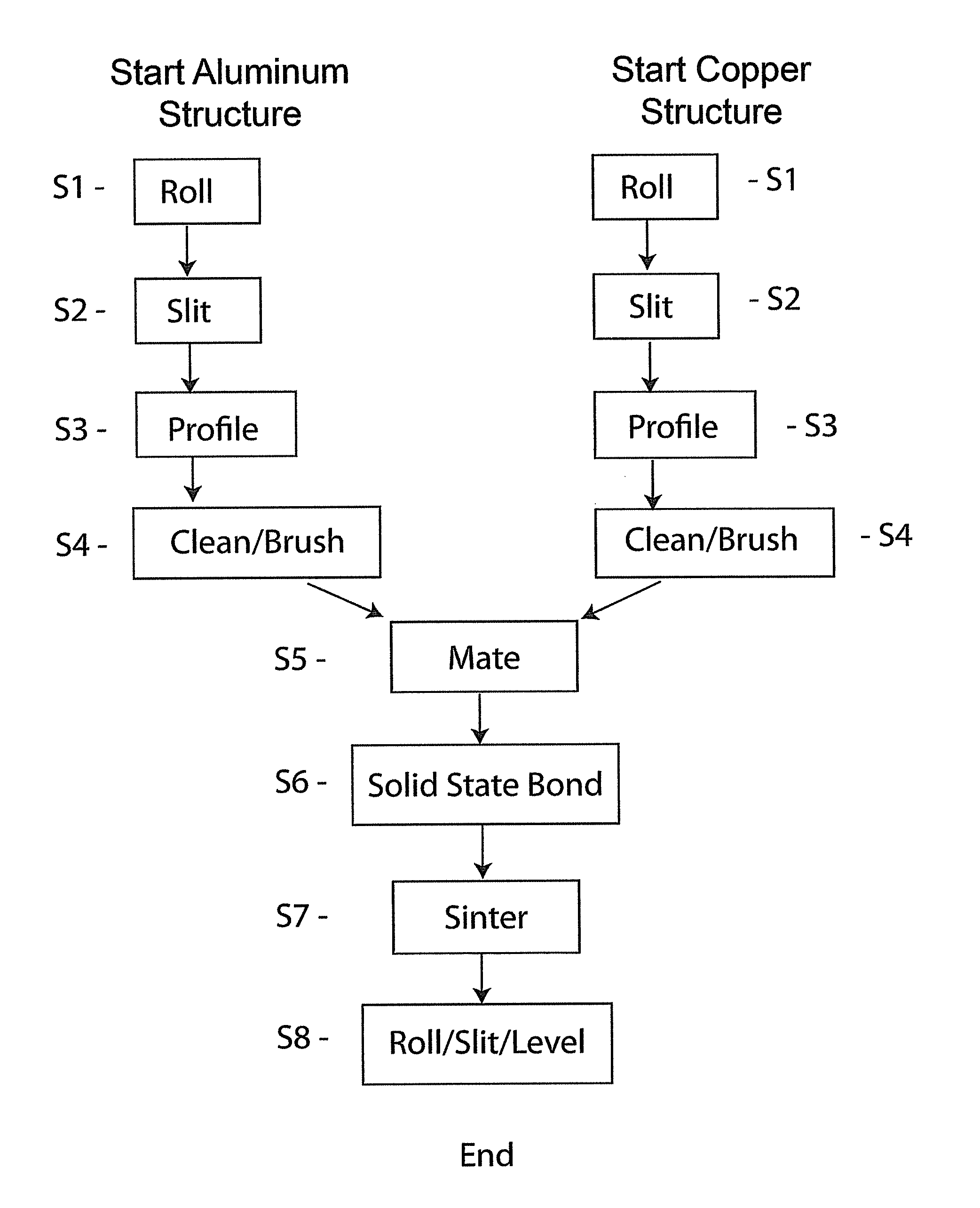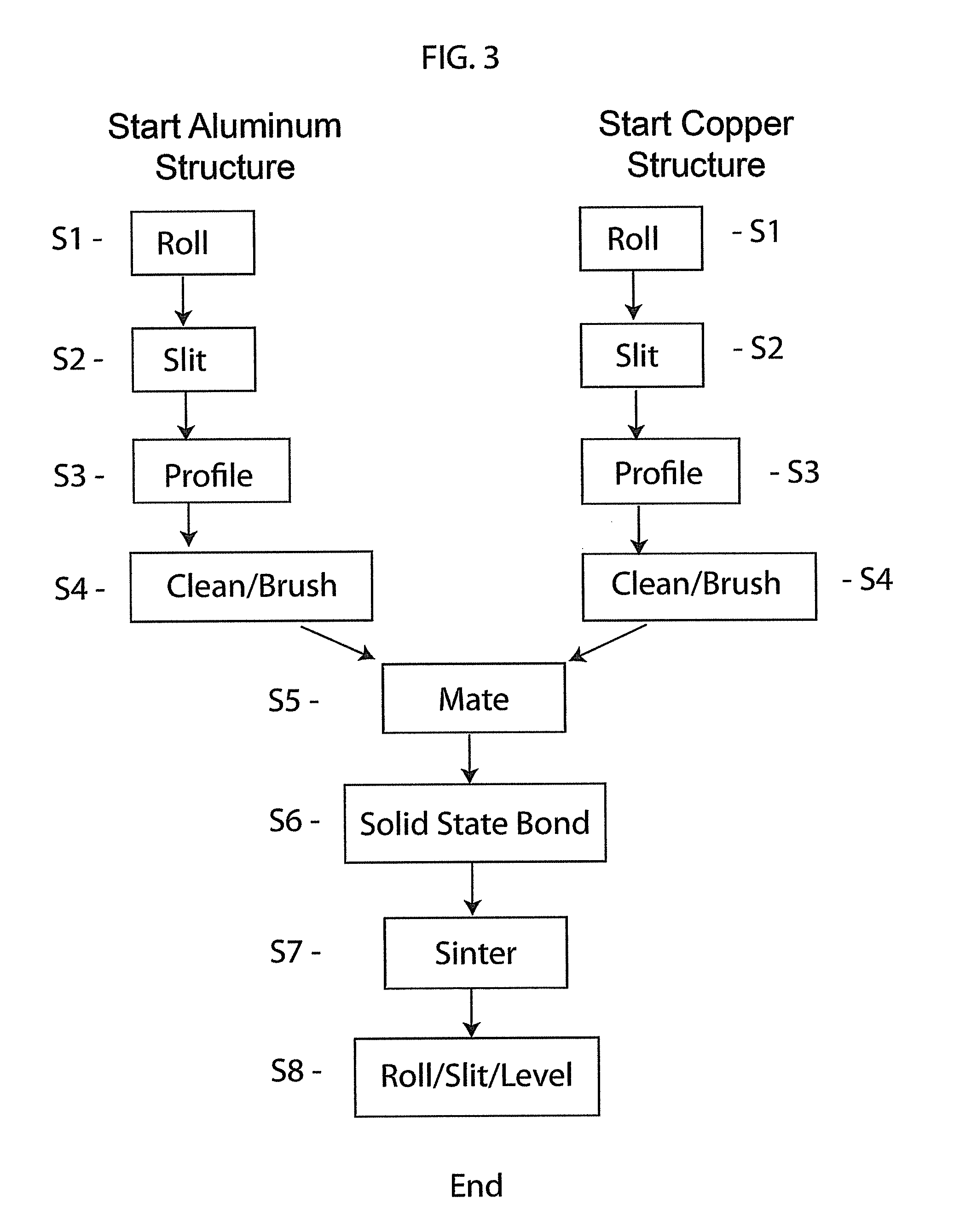Methods for creating side-by-side metallic bonds between different materials using solid-phase bonding and the products produced thereby
a technology of solid-phase bonding and side-by-side end products, which is applied in the field of creating a metallurgic bond, can solve the problems of conventional cladding, hot bonding process, and inability to produce side-by-side end products, and achieve the effect of reducing the number of side-by-side end products
- Summary
- Abstract
- Description
- Claims
- Application Information
AI Technical Summary
Benefits of technology
Problems solved by technology
Method used
Image
Examples
Embodiment Construction
[0035]Preferred embodiments of the subject invention are described below with reference to the accompanying drawings, in which like reference numerals represent the same or similar elements. The figures are not drawn to scale.
[0036]In general, the materials of the structures used to form the metallic composite products according to the subject invention have the following properties: they have sufficient ductility during the bonding process; they are capable of being cut or milled; and they have similar yield strengths, ductility and extrusion behavior. While a specific choice of material is based on a desired application, the subject invention is described below in terms of the formation of exemplary aluminum and copper bonds. The subject invention, however, is neither limited to metallurgic bonds involving only aluminum and copper, nor to the exemplary manufacturing parameters and material dimensions described herein. The subject invention overcomes the problems of conventional we...
PUM
| Property | Measurement | Unit |
|---|---|---|
| structure | aaaaa | aaaaa |
| plurality of angles | aaaaa | aaaaa |
| structures | aaaaa | aaaaa |
Abstract
Description
Claims
Application Information
 Login to View More
Login to View More - R&D
- Intellectual Property
- Life Sciences
- Materials
- Tech Scout
- Unparalleled Data Quality
- Higher Quality Content
- 60% Fewer Hallucinations
Browse by: Latest US Patents, China's latest patents, Technical Efficacy Thesaurus, Application Domain, Technology Topic, Popular Technical Reports.
© 2025 PatSnap. All rights reserved.Legal|Privacy policy|Modern Slavery Act Transparency Statement|Sitemap|About US| Contact US: help@patsnap.com



